It’s no exaggeration to describe oak trees as the national tree of Great Britain. They have been integral to our countryside for centuries, so naturally, many people are interested in growing oak trees for themselves.
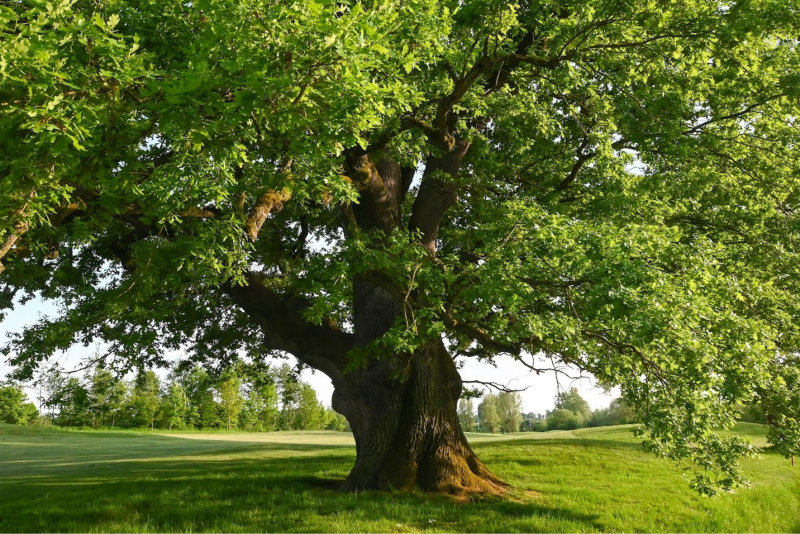
Planting an oak tree is one of the most altruistic things a gardener can do. These slow-growing giants take a few years to get going, but the rewards are great when they do. Not only do oaks make handsome specimen trees – perfect for marking special occasions or national events – they are powerful magnets for wildlife.
This article will focus on some of the UK’s most widely grown oak tree species and answer some commonly asked questions about oak trees.
What does an oak tree symbolise?
Oak trees are steeped in symbolism and mythology. They symbolise longevity, strength, fertility and power. And in ancient mythology, the oak was sacred to the ‘top gods’, Zeus, Jupiter and the Norse god of Thunder, Thor.
Oak trees are also associated with King Charles II, who famously escaped with his life by hiding in an oak tree after the Battle of Worcester in 1651. King Charles II’s connections to the oak tree are not only remembered by numerous pubs called ‘The Royal Oak’ but also by ‘Oak Apple Day’, celebrated every 29 May to commemorate the Merry Monarch’s restoration in 1660.
How quickly do oak trees grow on average?
The Common or English Oak tree grows to around 65-130 feet tall (20-40 metres). And it only starts fruiting (producing acorns) after about 40 years. After the first few decades, their growth slows and, on average, an oak tree will grow by 50 centimetres yearly.
How long do oak trees live on average?
On average, oaks live for up to 600 years (traditionally taking ‘200 years to grow, 200 years to live and 200 years to die’). However, they can survive for 1000 of years. Oak trees are classified as ‘veterans’ at 150 to 300 years old. ‘Ancient’ oak trees are those aged 400 years and over.
Notable examples include the Bowthorpe Oak in Lincolnshire and the Big Belly Oak in Wiltshire’s Savernake Forest, which are over 1000 years old.
What does the oak leaf look like?
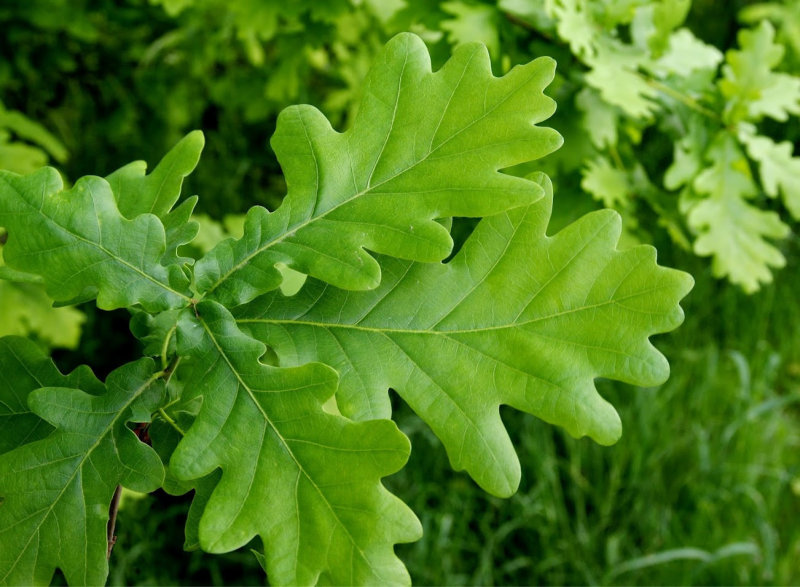
Although there are variations between species, oak tree leaves are easy to identify by their shape. A common oak leaf measures around 10 centimetres long, with 4 or 5 lobes along each side.
These lobed leaves are a bright, almost acidic green when they open in mid-May. They become a darker shade throughout the summer before turning reddish brown in autumn. Once you start looking at individual trees in detail, identifying different types of oak trees by their leaves is hugely satisfying!
What are the different types of oak trees?
There are two native oak tree types in the UK, Quercus robur and Q. petraea. Still, many more oak types are distributed across the northern hemisphere, from the Mediterranean to Asia and the Americas.
Although North America has 90 different species of oak, Mexico can claim to have the greatest diversity of oaks in the world, with an astonishing 160 native species.
The genus Quercus is a part of the Fagaceae (beech) family and includes deciduous and evergreen oaks.
Here are some varieties of native and non-native oak trees that grow in the UK.
1. Quercus robur (the Common or English Oak)
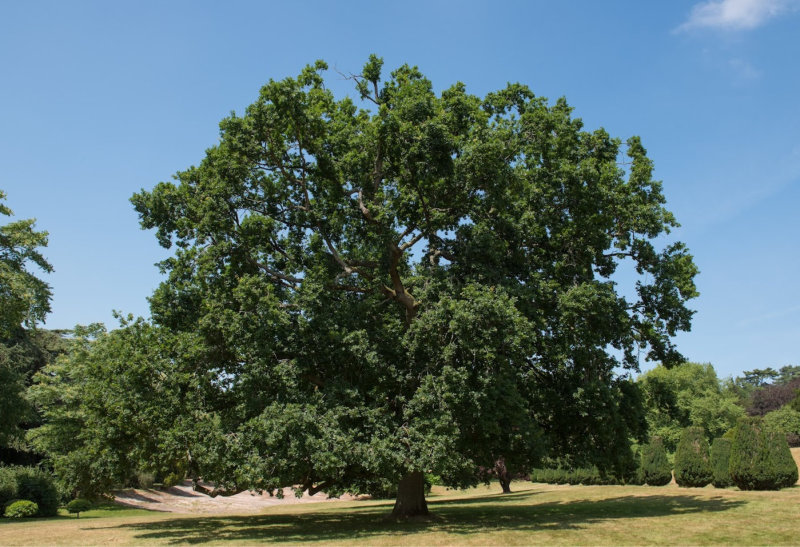
As its name suggests, this is the most common type of oak tree in the UK. The native English oak (sometimes known as Quercus pendunculata) is prized for its strong, weatherproof timber.
Other parts of the trees are also valued. The bark can be used for tanning leather, and pork from acorn-fed pigs is a delicacy. Oak trees are also havens of biodiversity. A single oak tree is capable of supporting some 2300 wildlife species, 300 of which are specific to oak trees alone.
Browse our selection of English Oak bareroot saplings and standard English Oak trees (bareroot or potted).
2. Quercus petraea (Sessile Oak)
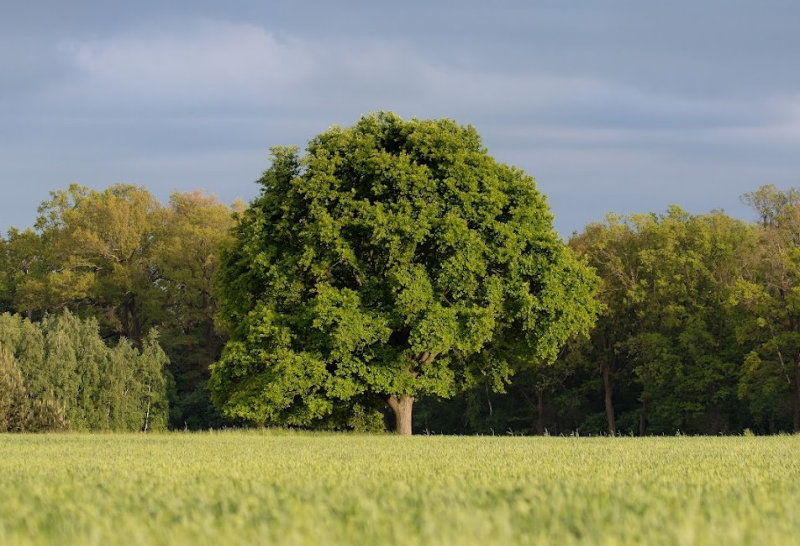
Sessile Oak is a native tree similar to the Common Oak but can tolerate higher altitudes and wet sites. Sessile Oaks grow to around 30 metres tall and have straighter trunks and a less spreading canopy than Common Oaks.
An easy way to tell these varieties apart is to look at their leaves:
- Common Oaks have leaves with very short stems and acorns carried on long stems
- Sessile Oaks have leaves with long stems but acorns that are short-stemmed.
Browse our selection of Sessile Oak bareroot saplings and our standard Sessile Oak trees (bareroot or potted).
3. Quercus cerris (Turkey Oak)
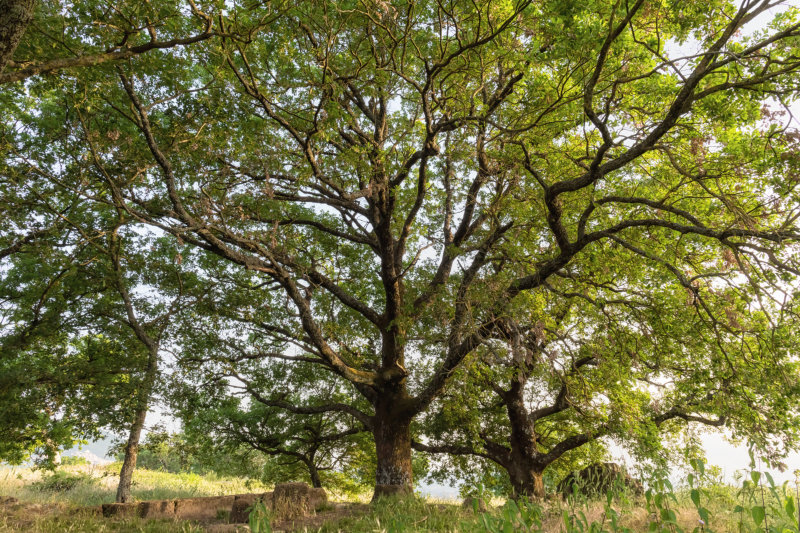
The Turkey Oak is a handsome tree with a spreading habit that suits landscape settings and large gardens. Although its native range is from southern France to Turkey, it has grown wild in Britain for several hundred years. It is a poor timber tree because it cracks easily, but the dense wood makes good firewood.
Browse our selection of Turkey Oak bareroot saplings and our standard Turkey Oak trees (bareroot or potted).
4. Quercus palustris (Pin Oak)
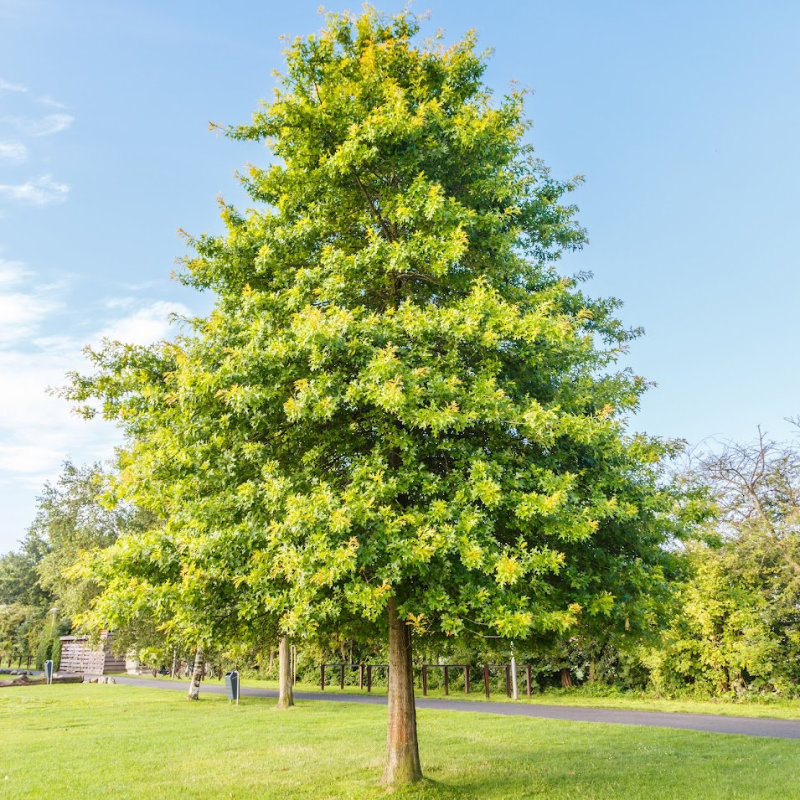
This North American native was introduced to the UK around 1800. The Pin Oak is a good urban tree as it can tolerate compacted, damp and heavy clay soils. Although not as long-lived as the Common Oak, the Pin Oak is a large and vigorous tree that has been given the coveted RHS Award of Garden Merit.
Browse our selection of Pin Oak bareroot saplings and standard Pin Oak trees (bareroot or potted).
5. Quercus rubra (Red Oak)
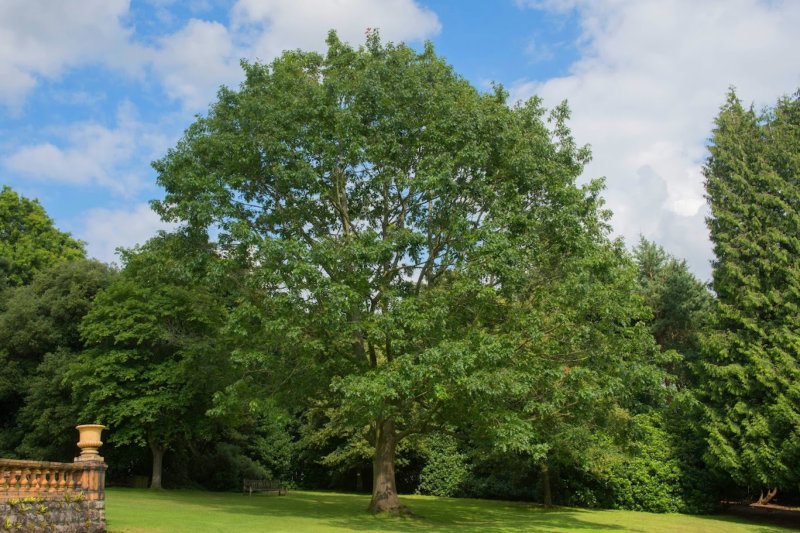
The American Red Oak is one of the prettiest oak trees you can grow. Its leaves have pointed lobes and turn a magnificent reddish-brown colour in autumn. A fine ornamental tree with a wide rounded canopy, Quercus rubra will grow rapidly on fertile, sunny sites. It can reach a height of around 20-28 metres.
Browse our Red Oak bareroot saplings and our standard Red Oak trees (bareroot or potted).
6. Quercus ilex (Holm or Holly Oak)
Quercus ilex is a handsome evergreen oak tree with a distinctive rounded canopy. It was introduced to the UK in the 16th century. It earned its nickname ‘Holly Oak’ because its young leaves are spiny like holly leaves. A native Mediterranean tree, Q. ilex is resistant to salt spray from the sea, making it a good choice for coastal locations.
Browse our selection of Holm Oak trees (available as pot-grown specimens, year-round).
7. Quercus suber (Cork Oak)
The Cork Oak is native to southern Europe and North Africa but can be grown in warm, southern areas of the UK. The craggy, deeply fissured bark of this slow-growing evergreen tree is the source of cork, commonly used in the drinks industry. A mature Cork Oak can be harvested for its bark every nine years and will be harvested about 16 times over its lifetime.
8. Quercus macrocarpa (Burr or Bur Oak)
Quercus macrocarpa is a type of white oak from eastern North America. Its large acorns are held in prickly cups that resemble burs (or burrs). The Burr Oak is an important species for wildlife. It hosts many types of caterpillars and moths and provides a food source for squirrels, deer, and birds, such as nuthatches and woodpeckers.
9. Quercus coccinea (Scarlet Oak)
The Scarlet Oak is a North American native that makes a magnificent autumn splash. At the end of summer, its long, deeply lobed leaves turn from green to a vibrant shade of scarlet red. It provides a spectacular show that usually lasts well into winter. This type of oak grows to around 24 metres in the UK.
Key takeaway
While not everyone has space to grow a ‘mighty oak’, there are compelling reasons to grow one of these fabulous trees if you have room.
A carefully planted specimen oak tree, with its stately presence, lush summer foliage, glowing autumn colour and abundant acorns, will spark joy long beyond a single human lifespan. The benefits of oak trees for wildlife are reason enough to grow an oak tree.

Browse our oak tree range to find the right tree for you, and take a look at our video on how to plant a large ornamental tree. If you are lucky enough to have space for more than one specimen, why not curate a collection of different types of oak trees? We also stock all the tree planting accessories you’ll need to get your oak tree off to a flying start.
Oak Joaks are Oke Jokes
What type of oak is also a man? A bloak
What substance does an oak fire emit? Smoak
What is an oak’s favourite card game? Poaker
How do you start a fight with an oak? Provoak it
How do you make an oak feel good? Stroak it
What do you call an oak that lost all its money? Broak
What does an oak wear when it’s cold? A cloak
How does an oak with a sore throat sound? Croakey
What happens to an oak at the end of its life? It croaks
Ancient Oak Joaks
Which Oak was on Star Trek? Dr Spoak
Which film stars Liam Neeson fighting to get his tree back? Toaken
